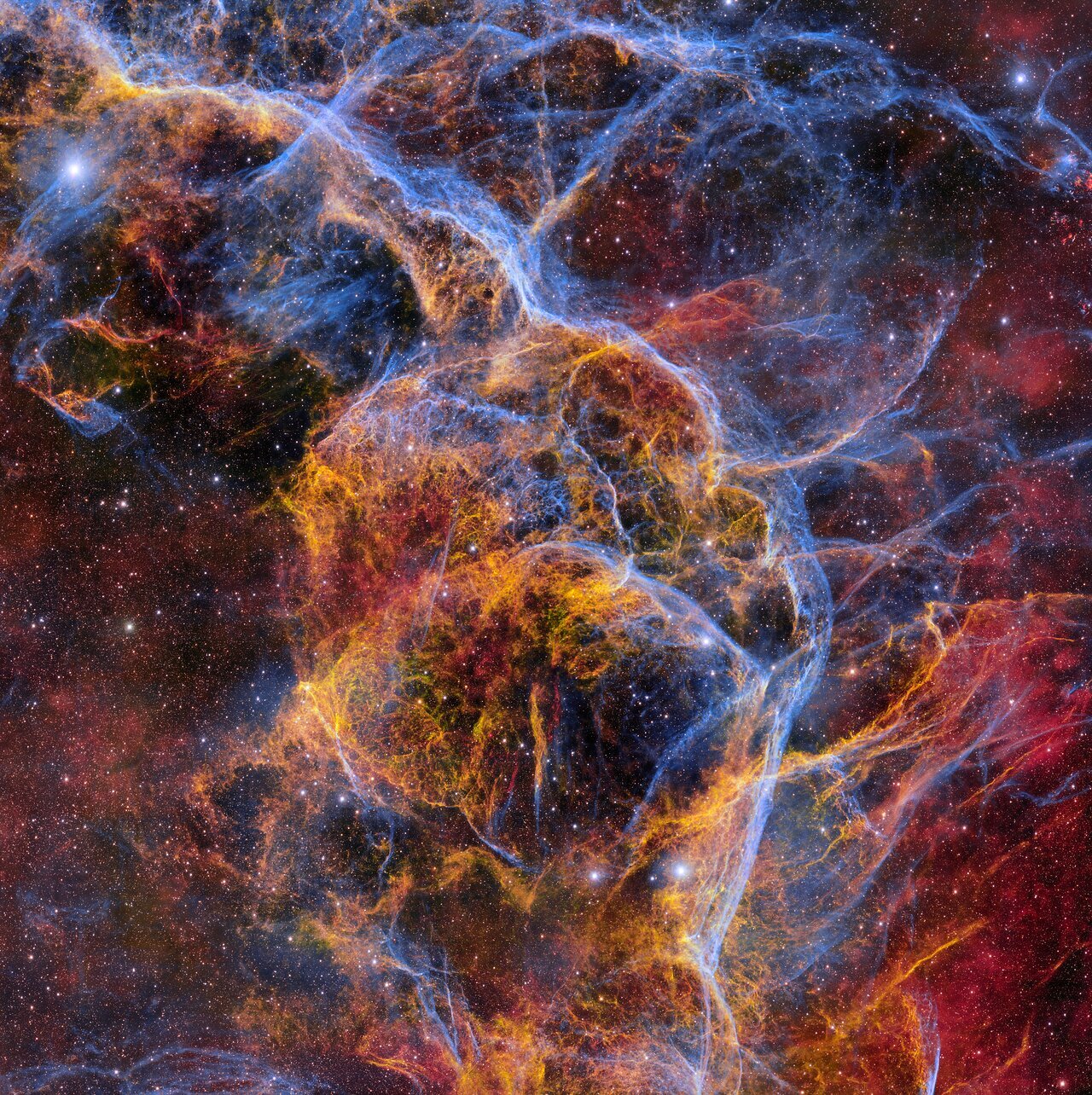18.03.2024
Dark Energy Camera captures remains of a massive star that exploded nearly 11,000 years ago in huge gigapixel image

With the powerful, 570-megapixel Department of Energy-fabricated Dark Energy Camera (DECam), astronomers have constructed a massive 1.3-gigapixel image showcasing the central part of the Vela Supernova Remnant, the cosmic corpse of a gigantic star that exploded as a supernova. DECam is one of the highest-performing wide-field imaging instruments in the world and is mounted on the US National Science Foundation's Víctor M. Blanco 4-meter Telescope at Cerro Tololo Inter-American Observatory, a Program of NSF’s NOIRLab.
This colorful web of wispy gas filaments is the Vela Supernova Remnant, an expanding nebula of cosmic debris left over from a massive star that exploded about 11,000 years ago. Located around 800 light-years away in the constellation Vela (the Sails), this nebula is one of the nearest supernova remnants to Earth. Though the unnamed star ended its life thousands of years ago, the shockwave its death produced is still propagating into the interstellar medium, carrying glowing tendrils of gas with it.
This image is one of the biggest ever made of this object and was taken with the state-of-the-art wide-field Dark Energy Camera (DECam), built by the Department of Energy and mounted on the US National Science Foundation's Víctor M. Blanco 4-meter Telescope at Cerro Tololo Inter-American Observatory in Chile, a Program of NSF’s NOIRLab. The striking reds, yellows, and blues in this image were achieved through the use of three DECam filters that each collect a specific color of light. Separate images were taken in each filter and then stacked on top of each other to produce this high-resolution color image that showcases the intricate web-like filaments snaking throughout the expanding cloud of gas. This is also the largest DECam image ever released publicly, containing an astounding 1.3 gigapixels [1].
The Vela Supernova Remnant is merely the ghost of a massive star that once was. When the star exploded 11,000 years ago, its outer layers were violently stripped away and flung into the surrounding region, driving the shockwave that is still visible today. As the shockwave expands into the surrounding region, the hot, energized gas flies away from the point of detonation, compressing and interacting with the interstellar medium to produce the stringy blue and yellow filaments seen in the image. The Vela Supernova Remnant is a gigantic structure, spanning almost 100 light-years and extending to twenty times the diameter of the full Moon in the night sky.
Despite the dramatics of the star’s final moments, it wasn’t entirely wiped from existence. After shedding its outer layers, the core of the star collapsed into a neutron star — an ultra-dense ball consisting of protons and electrons that have been smashed together to form neutrons. The neutron star, named the Vela Pulsar, is now an ultra-condensed object with the mass of a star like the Sun contained in a sphere just a few kilometers across. Located in the lower left region of this image, the Vela Pulsar is a relatively dim star that is indistinguishable from its thousands of celestial neighbors. Still reeling from its explosive death, the Vela Pulsar spins rapidly on its own axis and possesses a powerful magnetic field. These properties result in twin beams of radiation that sweep the sky 11 times per second, just like the consistent blips of a rotating lighthouse bulb.
This high-quality image demonstrates the incredible deep and wide capabilities of DECam. From its vantage point in the Chilean Andes, the Blanco telescope receives light that has traveled across the Universe. After entering the telescope’s tube, the light is reflected by a mirror 4-meters (13-feet) wide — a massive, aluminum-coated and precisely shaped piece of glass roughly the weight of a semi-truck. The light is then guided into the optical innards of DECam, passing through a corrective lens nearly a meter (3.3 feet) across before falling on a grid of 62 charge-coupled devices (CCDs), which act like the ‘eyes’ of the camera. The incoming light is then converted into electrical signals which are read out as pixels.
A single image taken with DECam has 570 megapixels, so with multiple exposures stacked on top of one another, the amount of detail that can be captured is truly remarkable. Owing to DECam’s large mosaic of CCDs, astronomers are able to create mesmerizing images of faint astronomical objects, such as the Vela Supernova Remnant, that offer a limitless starscape to explore.
Notes
[1] For comparison, the pixel count of an image taken with the camera in a standard smartphone can range from 12 to 48 megapixels. This image contains a total of 35786 x 35881 pixels, or 1.28 gigapixels.
Quelle: NSF’s NOIRLab (NSF's National Optical-Infrared Astronomy Research Laboratory)
